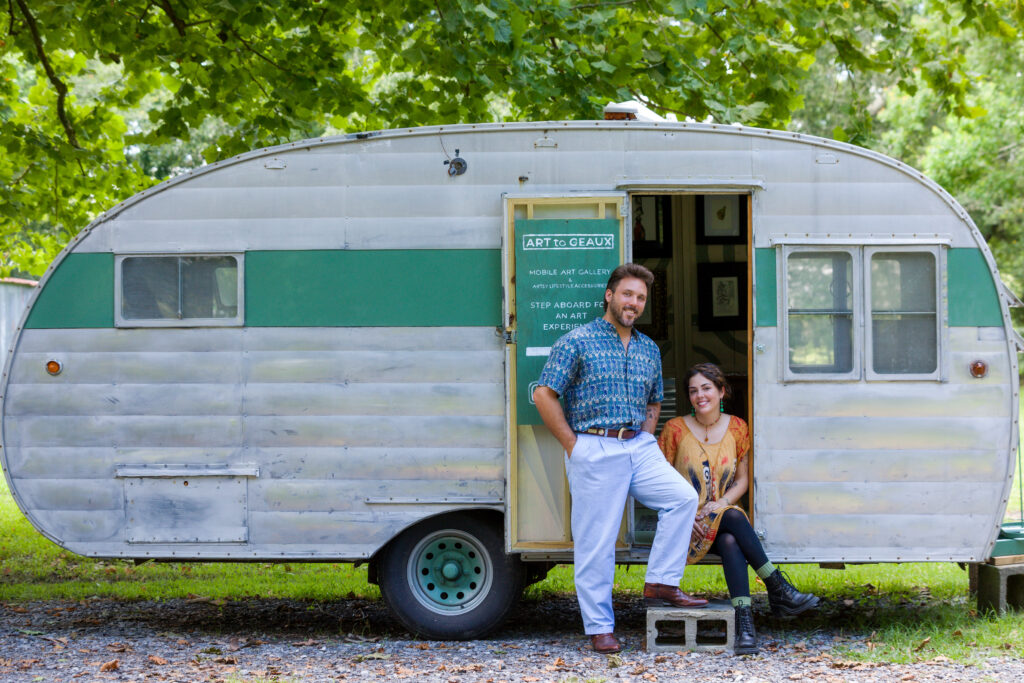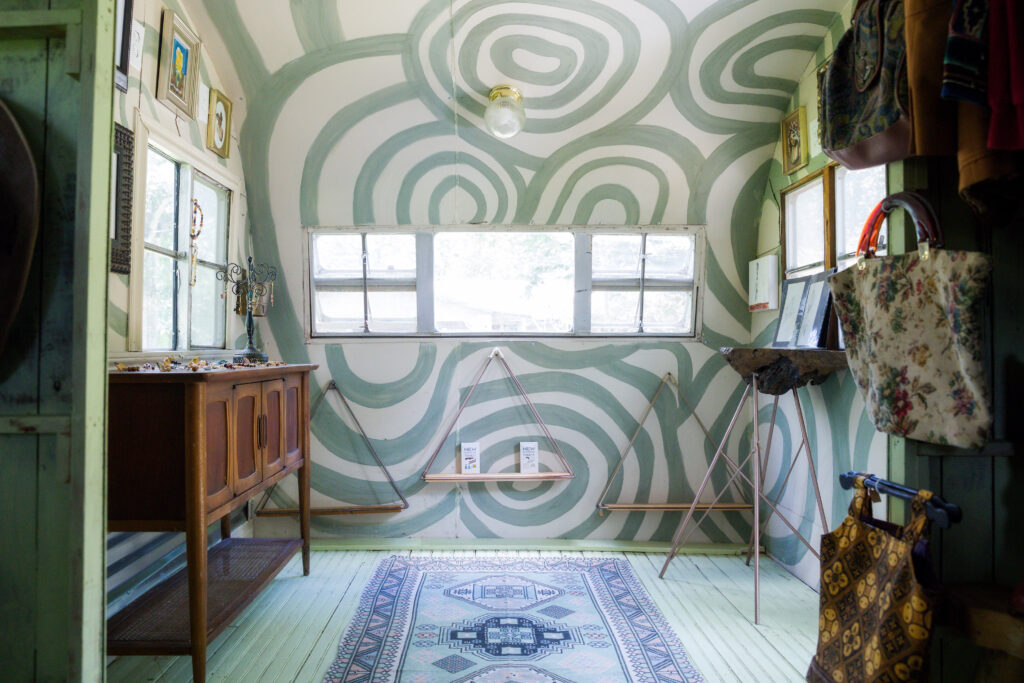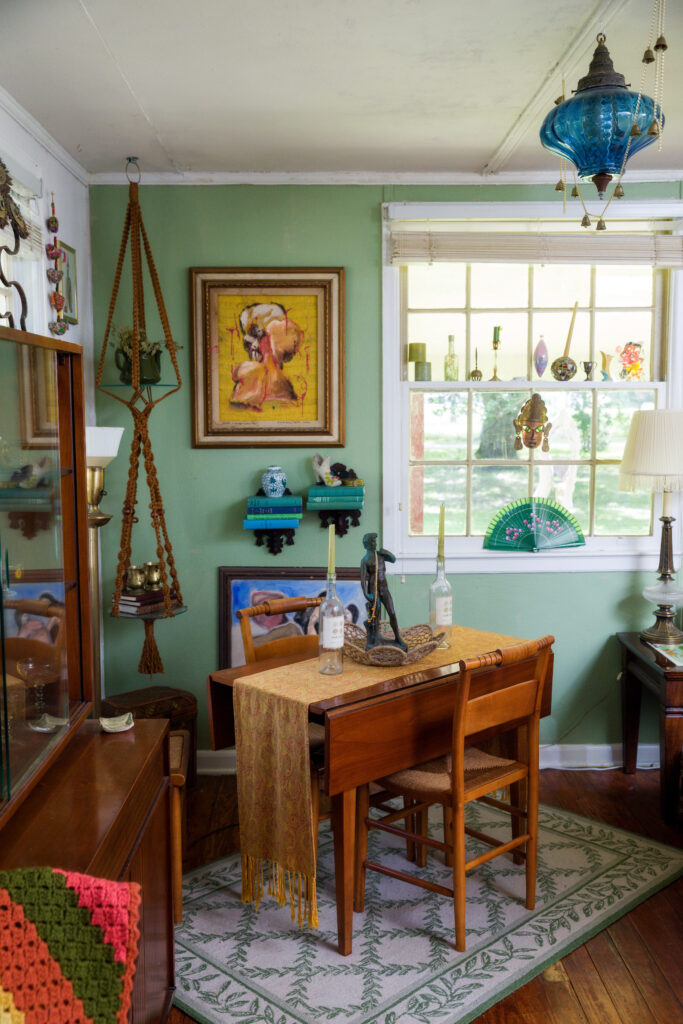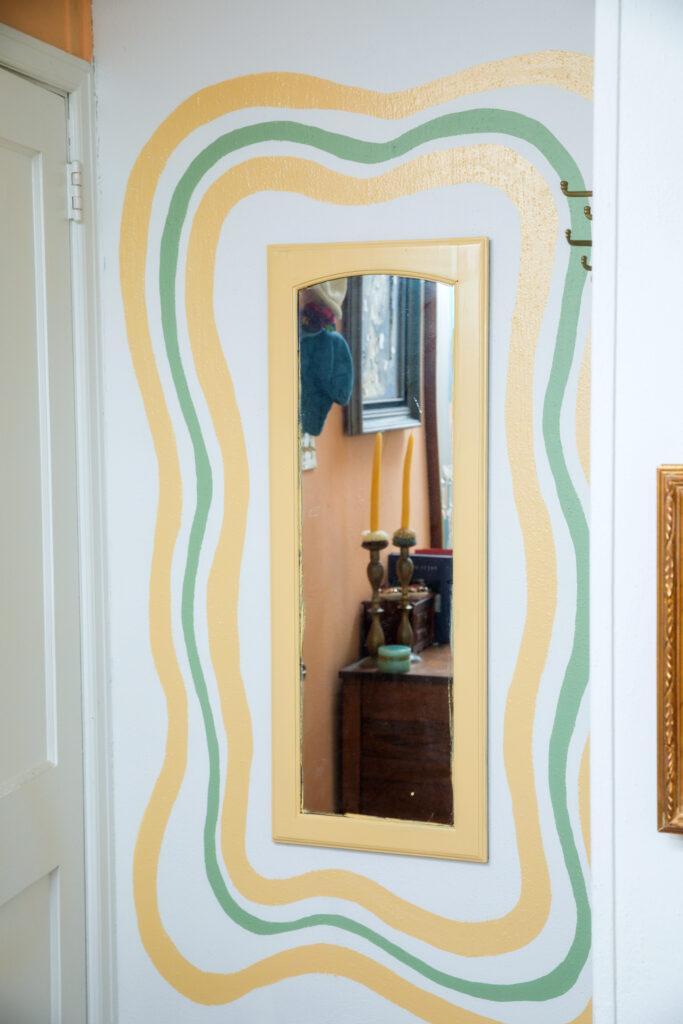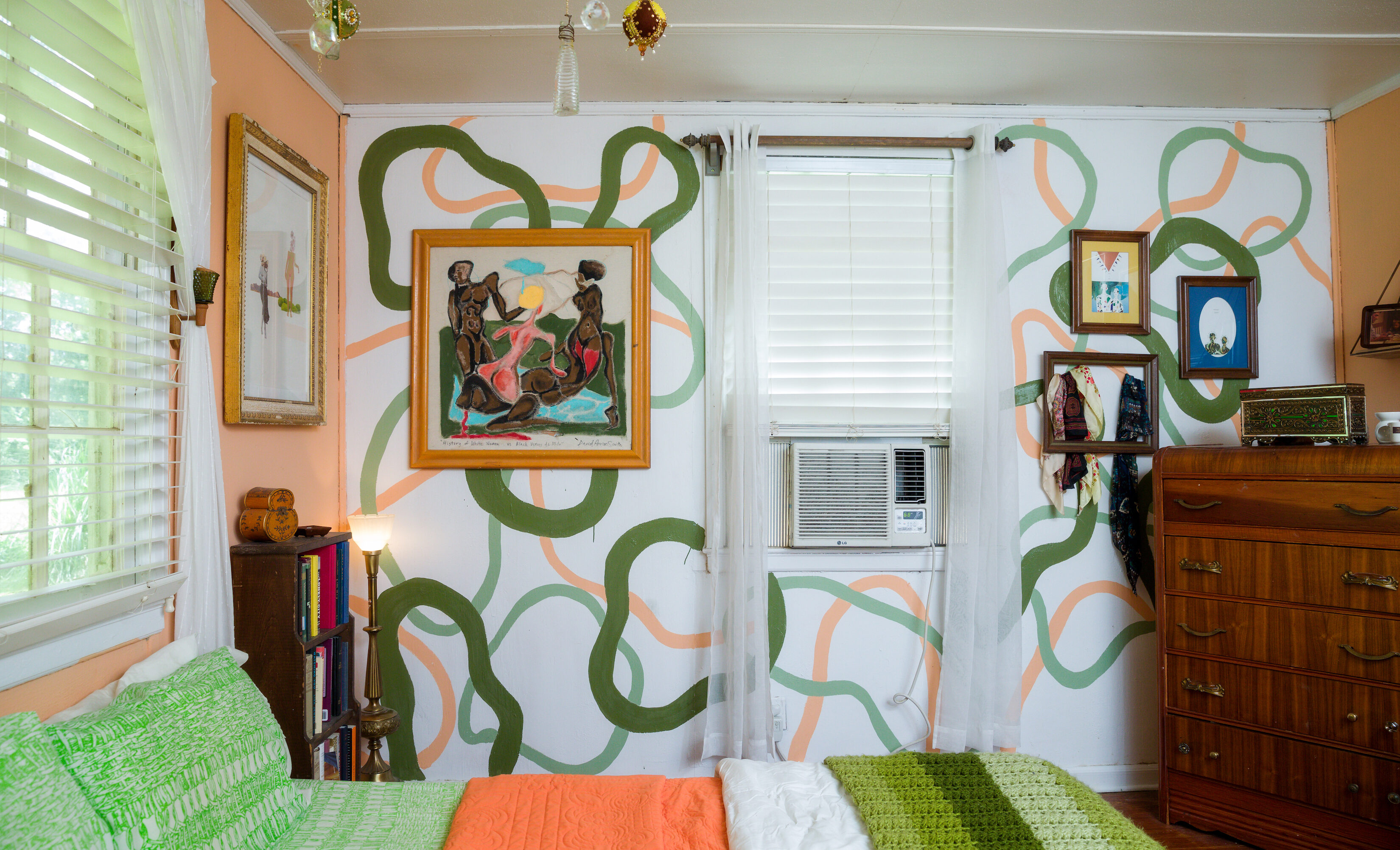
Inside a Gonzales cottage adorned with hand-painted murals, heirloom antiques and funky mirrors
Nothing is planned inside David Aaron Smith and Katelyn Doherty’s home.
It’s how Smith makes his paintings, dripping acrylics onto a canvas and then letting the scene evolve subconsciously, spontaneously, organically. And it’s the same way the couple decorates. Furniture is acquired by chance—a dresser they stumbled upon at an antique store, or a 1930s couch passed down by Doherty’s Great Aunt Gigi.
“We work with what’s available,” Smith says. “Our home is always changing based on whatever pieces we found at an estate sale or thrift shop. It’s like—I have to have this rug and then rearrange my life around it.”
|
|
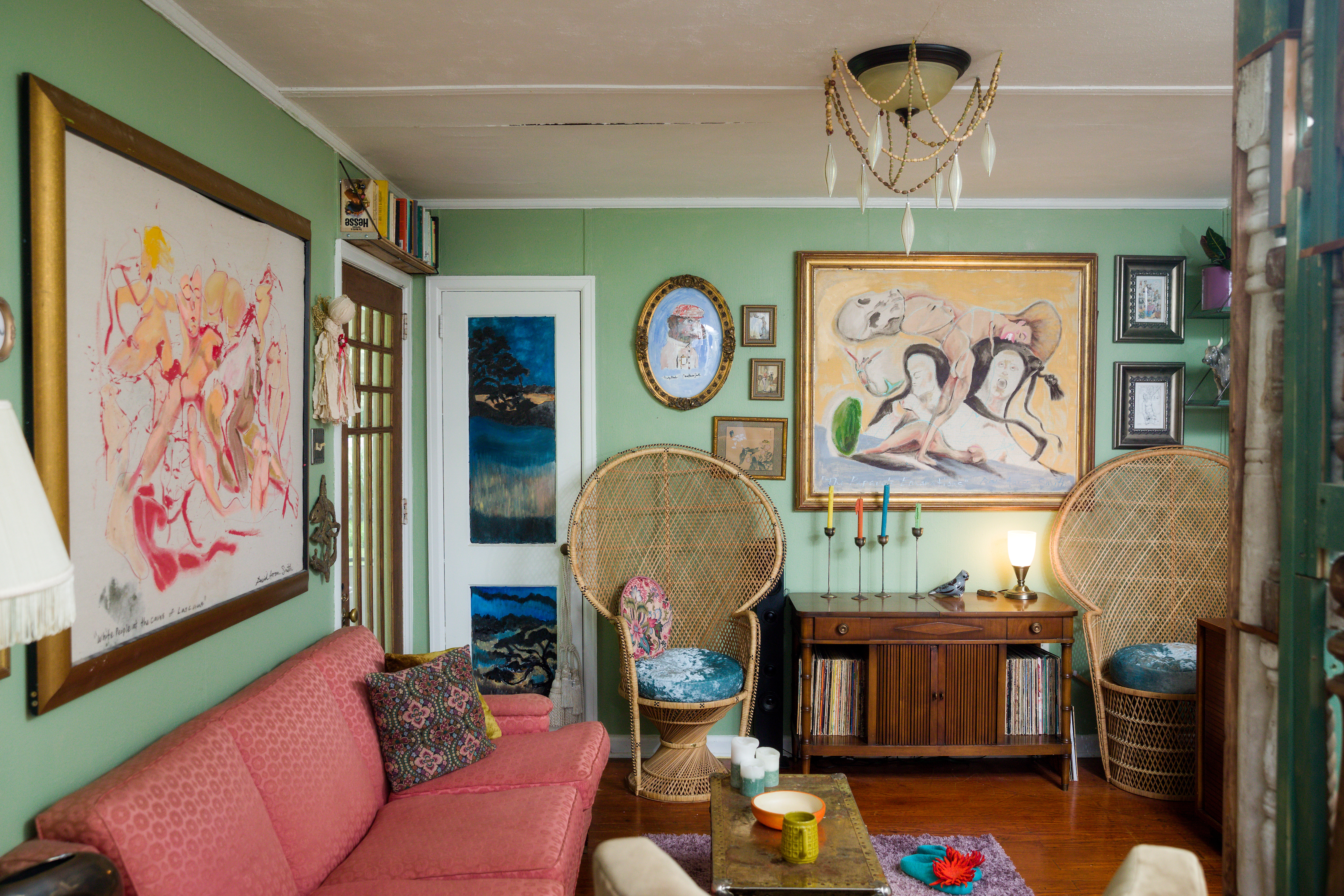
Smith and Doherty own Art to Geaux, a mobile boutique stocked with Smith’s paintings, Doherty’s collages and handmade jewelry, and a curated collection of vintage clothing.
The duo met in California, where they lived together for years in the remote Death Valley town of Tecopa. In the early days of the pandemic, they packed their belongings into a 1950s canned-ham-style metal trailer they bought for $600 and returned to Smith’s hometown of Gonzales. They restored the trailer to use for their art shop, which they began taking on the road this spring.
Their next project: turning their house into a maximalist, no-rules space that reflects their life together. Inside the 950-square-foot two-bedroom, nearly every inch is covered with the couple’s art, antique finds or upcycled pieces.
In the living room, the couple reconfigured simple glass lamps and light fixtures into statement-makers, draping them with beads and objects from their “bag of tricks.” When a blank white door felt too out-of-place, they turned it into a swamp. On the door panels, Smith first sketched the shadows of the trees and the ripples of the water, and then Doherty finished the scene with oil paints.
Smith’s large-scale paintings are housed in gilded antique frames, a refined contrast to the ethereal scenes of mythical creatures and warfare the paintings depict. Doherty designs mirrors, painting the frames in bright colors or affixing them with objects like cassette tapes, flowers and alligator figurines. “If there’s any old mirror I can save, I try to,” she says.
In their bedroom, crystals and rocks hang from strings over the bed like a makeshift chandelier. Doherty painted the walls a punchy sherbet hue found in Home Depot’s “oops paint” section. When she ended up having only enough color to paint one wall, she improvised, covering the remaining walls with wavy abstract shapes, complementing the orange with shades of sage.
“Painting is so meditative, so I figured I’d just paint a design on the walls, and if I didn’t like it, I’d paint over it,” she says. “I’m always iffy about my work, but when Aaron came into the room, he loved it. So it stuck.”
In fact, that’s how most of the house was designed—rearranging and experimenting until things felt just … right.
“How do we make an empty, blah corner of the house match everything else?” Smith asks. Doherty’s answer: “Don’t put too many limits on things.”
|
|
|
